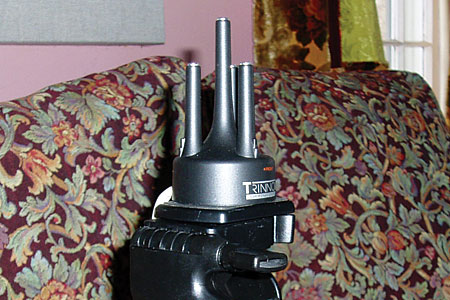Choosing a loudspeaker may be the biggest challenge for music and home theater lovers. There are countless brands from which to choose, and even more claims and counter-claims. Since the room has such a profound impact on the sound of a loudspeaker at lower frequencies, and it is impossible to listen in a blind test at an audio store, if they can find one, there is little that an audiophile can do to make a rational decision. Fortunately, science has come to the rescue with a set of measurements that have been proven to demonstrate an extremely close correlation with sound quality, as based on carefully controlled double-blind listening tests. This group of measurements have been adopted as the industry standard for measuring loudspeakers, as ANSI/CEA-2034-A. https://standards.cta.tech/apps/group_public/project/details.php?project_id=165
Contradicting the oft-repeated claim that choosing a loudspeaker is a very personal choice, research has proven that regardless of age, culture, or listening experience, all people with nominally normal hearing generally agree on which speakers sound better than others. Indeed, there is a universal definition of what sounds good. http://www.aes.org/e-lib/browse.cfm?elib=12794 and https://secure.aes.org/forum/pubs/conventions/?elib=12847
In this thread, we will publish the results of these measurements. In addition, we will discuss their correlation to double-blind listening tests, http://seanolive.blogspot.com/2008/12/part-3-relationship-between-loudspeaker.html as well as publishing the results of formal listening tests, when available. We will add measurement results as they become available. The intention of this thread is for it to be reality-based, and to inform and discuss loudspeaker measurements and listening tests. The papers that really started it all are now available for free from the Audio Engineering Society here: http://www.aes.org/e-lib/browse.cfm?elib=5276 and here: http://www.aes.org/e-lib/browse.cfm?elib=5270
Contradicting the oft-repeated claim that choosing a loudspeaker is a very personal choice, research has proven that regardless of age, culture, or listening experience, all people with nominally normal hearing generally agree on which speakers sound better than others. Indeed, there is a universal definition of what sounds good. http://www.aes.org/e-lib/browse.cfm?elib=12794 and https://secure.aes.org/forum/pubs/conventions/?elib=12847
In this thread, we will publish the results of these measurements. In addition, we will discuss their correlation to double-blind listening tests, http://seanolive.blogspot.com/2008/12/part-3-relationship-between-loudspeaker.html as well as publishing the results of formal listening tests, when available. We will add measurement results as they become available. The intention of this thread is for it to be reality-based, and to inform and discuss loudspeaker measurements and listening tests. The papers that really started it all are now available for free from the Audio Engineering Society here: http://www.aes.org/e-lib/browse.cfm?elib=5276 and here: http://www.aes.org/e-lib/browse.cfm?elib=5270









